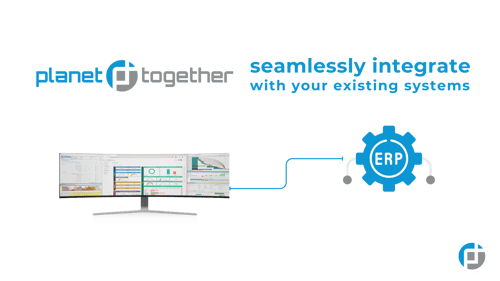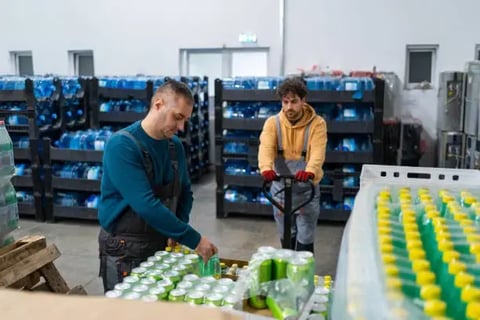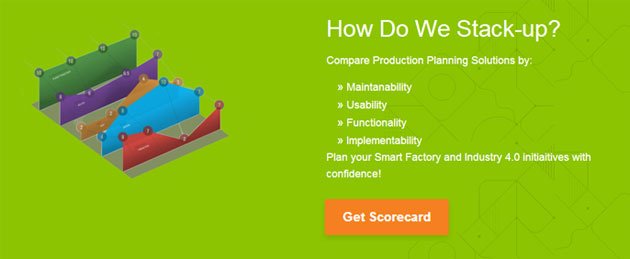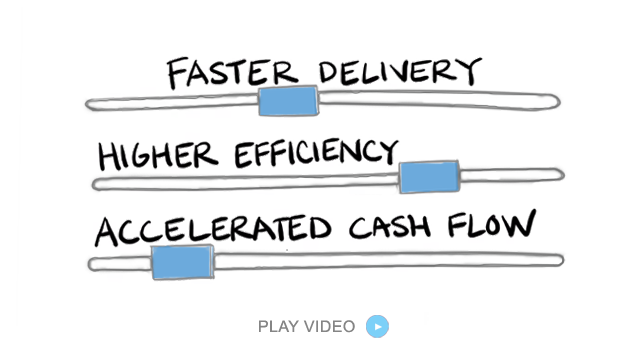Overcoming Supply Chain Challenges in Food and Beverage Manufacturing
In today’s globalized and volatile environment, supply chain disruptions are no longer isolated events—they’re a persistent challenge. From raw material shortages and changing consumer demand to regulatory changes and logistics bottlenecks, Food and Beverage (F&B) manufacturers are navigating an increasingly complex landscape.
For Production Planners, the pressure is especially intense. You're not only responsible for aligning production schedules with demand forecasts but also ensuring that ingredient availability, equipment utilization, and labor constraints are all optimized. Achieving this balance requires more than spreadsheets or standalone ERP tools—it demands a robust, integrated approach.
That’s where advanced planning and scheduling (APS) systems like PlanetTogether, integrated with platforms such as SAP, Oracle, Microsoft Dynamics, Kinaxis, or Aveva, come into play.
This blog explores how these tools help production planners address critical supply chain challenges in the F&B industry.
![]()

Challenge #1: Volatile Demand and Changing Consumer Preferences
Consumer demand in the food and beverage sector is unpredictable. Health trends, seasonal variations, and promotional events can all create sudden shifts in demand, making it difficult to maintain optimal inventory levels.
The Planner’s Dilemma:
Too much inventory leads to waste—especially with perishables. Too little leads to stockouts and missed revenue.
Solution:
By integrating PlanetTogether APS with your ERP system (like SAP or Oracle), you gain real-time visibility into both supply and demand. This synchronization helps planners:
Access live sales data and consumer behavior insights
Adjust production schedules based on forecast changes
Simulate scenarios before making planning decisions
This responsiveness allows production teams to pivot quickly and produce the right products in the right quantities—reducing both waste and missed opportunities.
Challenge #2: Raw Material Availability and Supplier Disruptions
Food manufacturers are especially susceptible to raw material shortages due to weather events, geopolitical tensions, and supplier reliability.
The Planner’s Dilemma:
When ingredients like cocoa, flour, or dairy become scarce, production plans must be revised—fast.
Solution:
A connected solution like PlanetTogether integrated with Kinaxis provides end-to-end supply chain transparency. It enables production planners to:
Monitor supplier performance and lead times
Identify alternative suppliers when disruptions occur
Re-prioritize production schedules to use available materials efficiently
Advanced planning tools also enable multi-site coordination, ensuring that raw materials can be shifted to facilities where they’re needed most without unnecessary delays.
Challenge #3: Shelf Life and Regulatory Compliance
Unlike durable goods, food and beverage products come with strict expiration timelines and safety regulations. Missteps in production planning can result in spoilage, recalls, or legal liabilities.
The Planner’s Dilemma:
How do you ensure that every batch meets compliance standards and is delivered within its viable shelf life?
Solution:
Through integration with systems like Aveva and Microsoft Dynamics, PlanetTogether APS allows planners to:
Track product shelf life in real-time
Prioritize batches based on FIFO or FEFO logic
Schedule clean-in-place (CIP) and maintenance in compliance with food safety standards
The result? Greater traceability, reduced waste, and full alignment with food safety protocols.
Challenge #4: Labor Shortages and Workforce Variability
Labor remains one of the most unpredictable variables in food and beverage manufacturing. With high turnover and varying skill levels, aligning labor with production demand can be a daily struggle.
The Planner’s Dilemma:
How can you maintain consistent output when your workforce availability fluctuates?
Solution:
With PlanetTogether’s labor-aware scheduling, integrated with your ERP (e.g., SAP or Oracle), planners can:
Match production plans to available labor and skill sets
Identify when to reschedule or automate processes
Plan overtime and shifts proactively to avoid disruptions
Additionally, by using predictive analytics, the platform can anticipate future labor shortages and recommend adjustments to the master production schedule.
Challenge #5: Equipment Constraints and Maintenance Downtime
In F&B facilities, equipment bottlenecks and unplanned downtime can derail even the most well-thought-out production schedules.
The Planner’s Dilemma:
How can you ensure optimal utilization of your machinery while minimizing downtime?
Solution:
Integrating PlanetTogether with Aveva’s industrial operations platform enables planners to:
Monitor equipment availability in real time
Integrate predictive maintenance schedules directly into production planning
Simulate various scheduling scenarios to identify the least disruptive plan
This allows for proactive decision-making, keeping machines running and reducing costly unplanned stops.
Challenge #6: Multisite and Multi-SKU Complexity
Many F&B manufacturers operate across multiple locations and offer a wide range of SKUs, making coordination a monumental task.
The Planner’s Dilemma:
How can you ensure smooth production and distribution across sites without duplication or inefficiency?
Solution:
A centralized APS like PlanetTogether, when integrated with platforms like Microsoft Dynamics or Kinaxis, provides a unified view of production across sites. This helps planners:
Manage product families and SKUs efficiently
Balance production loads across locations
Reduce lead times and ensure consistent delivery performance
Having this visibility also aids in centralized inventory planning, helping reduce carrying costs while maintaining service levels.
Challenge #7: Sustainability Pressures and Waste Reduction
Sustainability is no longer optional—it’s a mandate. Consumers and regulators alike are holding F&B companies accountable for their environmental impact.
The Planner’s Dilemma:
How can you minimize waste while still meeting production targets?
Solution:
By leveraging PlanetTogether and ERP integrations, planners can implement strategies like:
Lean manufacturing and just-in-time scheduling
Real-time performance tracking to reduce overproduction
Optimization algorithms to cut energy and water usage
Moreover, advanced analytics help identify opportunities to recycle by-products or redesign workflows that reduce the environmental footprint of production.

How Integration Brings It All Together
The common thread across all these challenges is visibility and agility. Standalone ERP systems provide valuable data, but they lack the advanced modeling, scenario planning, and optimization capabilities that PlanetTogether APS offers.
When integrated with major systems like SAP, Oracle, Microsoft Dynamics, Kinaxis, or Aveva, PlanetTogether becomes a strategic engine that turns data into action:
SAP + PlanetTogether: Enables synchronized production and procurement
Oracle + PlanetTogether: Supports agile response to demand shifts and supplier changes
Microsoft + PlanetTogether: Drives collaborative planning across departments
Kinaxis + PlanetTogether: Delivers supply chain insights with real-time operational alignment
Aveva + PlanetTogether: Combines production planning with process automation and asset performance
This seamless integration empowers production planners to optimize operations, improve resilience, and drive profitability—despite external pressures.
In today’s dynamic food and beverage environment, the role of the production planner is transforming from scheduler to strategic decision-maker. Addressing supply chain challenges isn't just about reacting faster—it’s about planning smarter.
By integrating PlanetTogether APS with leading ERP and industrial platforms, F&B production planners can make decisions that are proactive, data-driven, and aligned with broader business goals. Whether it's maintaining shelf-life compliance, optimizing resource use, or responding to market shifts, the right tools make all the difference.
The future of food manufacturing depends on smarter planning. And that future starts now—with you. Are you ready to take your manufacturing operations to the next level? Contact us today to learn more about how PlanetTogether can help you achieve your goals and drive success in your industry.
Topics: PlanetTogether Software, Integrating PlanetTogether, Food and Beverage Manufacturing, Real-time Visibility into both Supply and Demand, End-to-End Supply Chain Transparency, Track Product Shelf Life in Real-Time, Monitor Equipment Availability in Real Time





















LEAVE A COMMENT